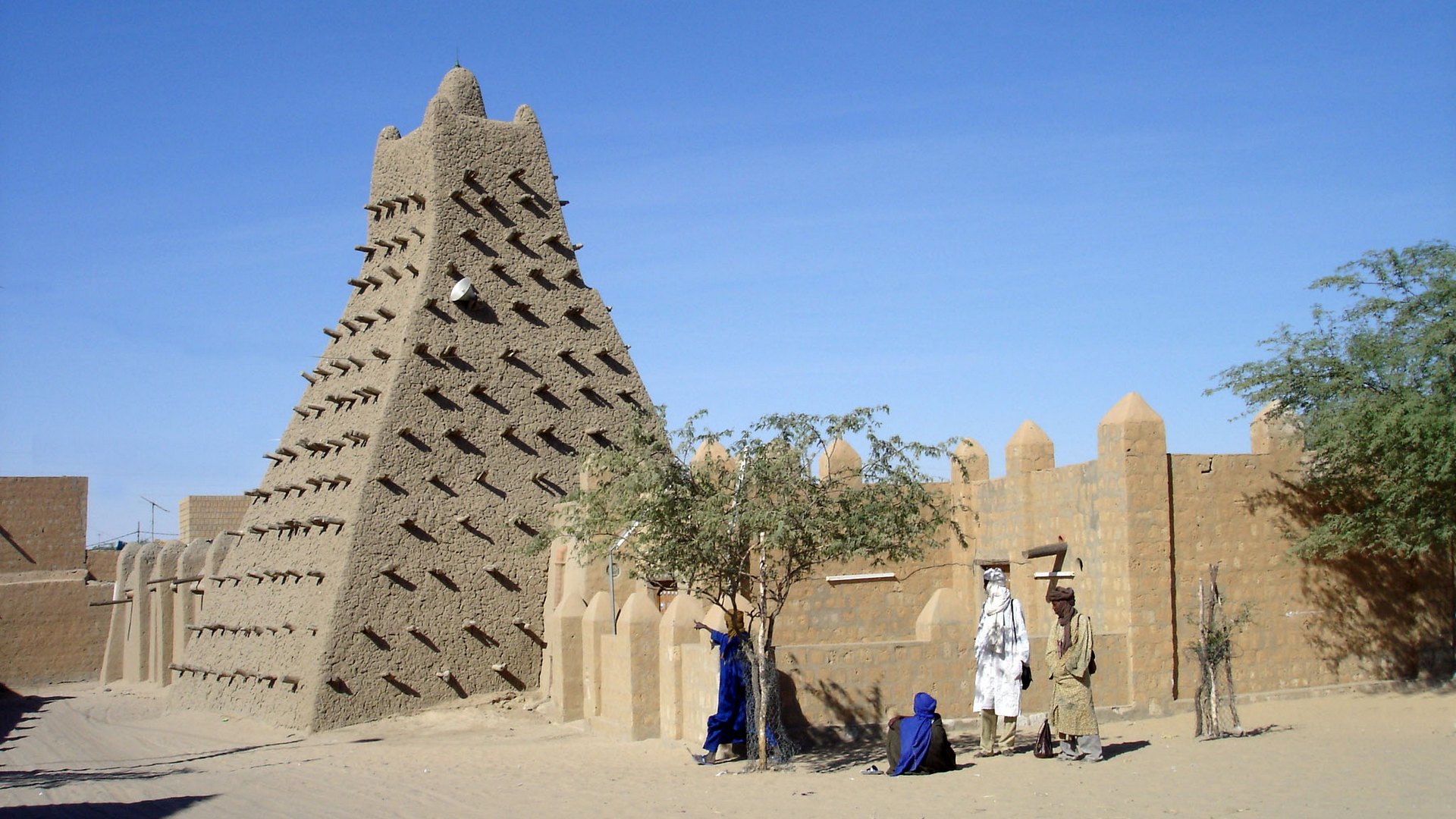Description
Property Name: Sankore Mosque
Inventory No: 223-29-2
Date of infill of the inventory form: 2008-02-20
Country (State party): Mali
Province: Timbuktu
Town:
Geographic coordinates: 16° 46′ 54.7″ N
3° 0′ 38.46″ W
Historic Period:
Year of Construction: 14th-15th centuries
Style:
Original Use: Mosque
Current Use: Mosque
Architect: Unknown
Significance
Similar in construction to the Great Mosque at Timbuktu, the courtyard is surrounded on three sides by enclosed arcaded galleries, there is a single mihrab niche and the minaret is heavily buttressed. The mosque was known as a centre of learning from the early 15th century. Various reconstructions are recorded, notably that by al-‘Aqib in 1578. The original form of the mosque, as described in 1828 by Caillie, seems to have resembled that at Chinguetti. The galleries were probably added, and also the buttressing of the minaret, when the building was repaired by a Kunta Arab leader, Shaykh Ahmad al-Bakka’i, in the late 1840s.
Selection Criteria
vi. to be directly or tangibly associated with events or living traditions, with ideas, or with beliefs, with artistic and literary works of outstanding universal significance
State of Preservation
The city was designated a UNESCO World Heritage site in 1988. In 2012, in response to armed conflict in the region, Timbuktu was added to the UNESCO List of World Heritage in Danger.
the Sankore mosque, around which Sankore University was established. The mosque still stands today, probably because of al-Sāḥili’s directive to incorporate a wooden framework into the mud walls of the building, thus facilitating annual repairs after the rainy season.
References
Michell, George. ed. 1978. Architecture of the Islamic World; Its History and Social Meaning. London: Thames & Hudson.


